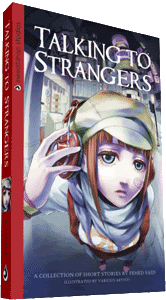Tezuka is known for being pretty experimental for his time. Recently I've been reading his Ode to Kirihito. Most of the book has a very clear panel layout and narrative but these two pages stood out a bit. Nowadays this type of irregular panelling would hardly raise a brow, but I wonder if it would have been perceived as pretty out there back when it was published in the 70's.
The question is how effective this kind of jigsaw type of panelling is. I find myself struggling to figure out in what order the panels are supposed to be read. It could be argued that since these panels are used in a collage fashion to give you a visual blast, it doesn't really matter. As interesting as it may look, the fact that you have to stop and think about how to read it defeats the purpose to me.
It could be that the purpose of the creator is to generate a sense of psychological unease, in which case I think this type of paneling would work pretty well, but having read these two pages in context, neither warrants large amount of unease.
It can be a challenge to balance between interesting page layouts and readability. Paul Duffield and Kate Brown did great jobs on this for SelfMadeHero's Manga Shakespeare line - their titles are The Tempest and A Midsummer Night's Dream respectively.

Being Shakespeare, the beautiful and often abstract page layouts compliment the poetical language. At the same time, the narrative is kept flowing steadily so the reader can immerse themselves in the story.
(And for the record, I'm not just saying this just because I happen to be working on a title of my own.)
---
Paul Duffield - spoonbard
Kate Brown @ Deviantart
Manga Shakespeare - SelfMadeHero




































